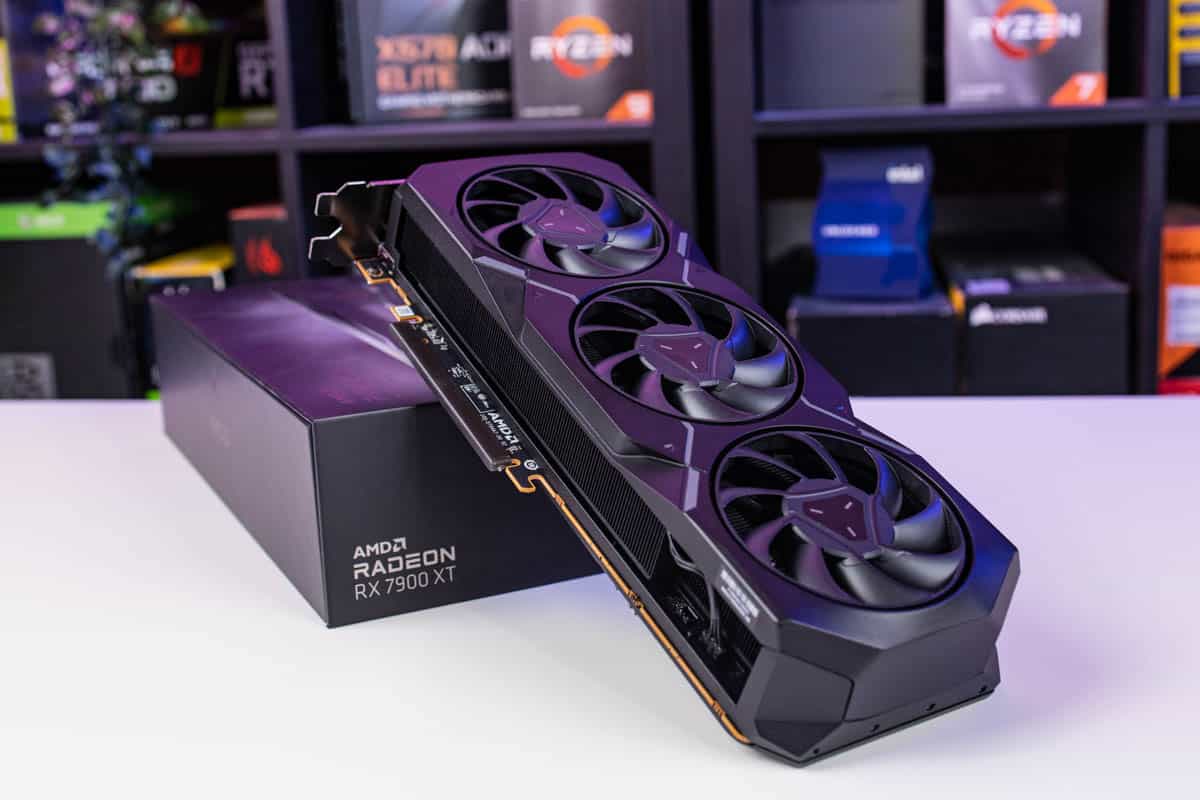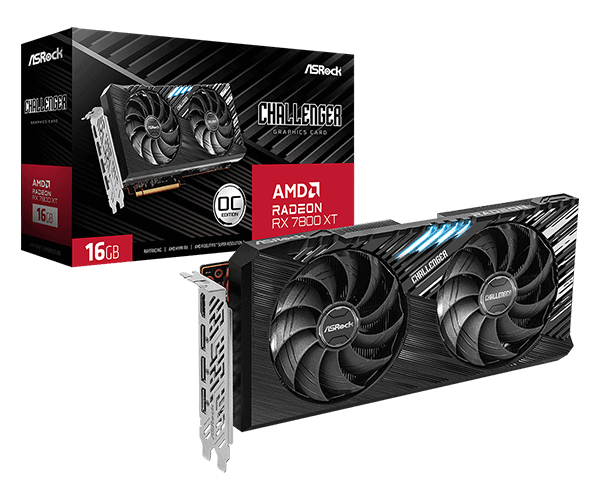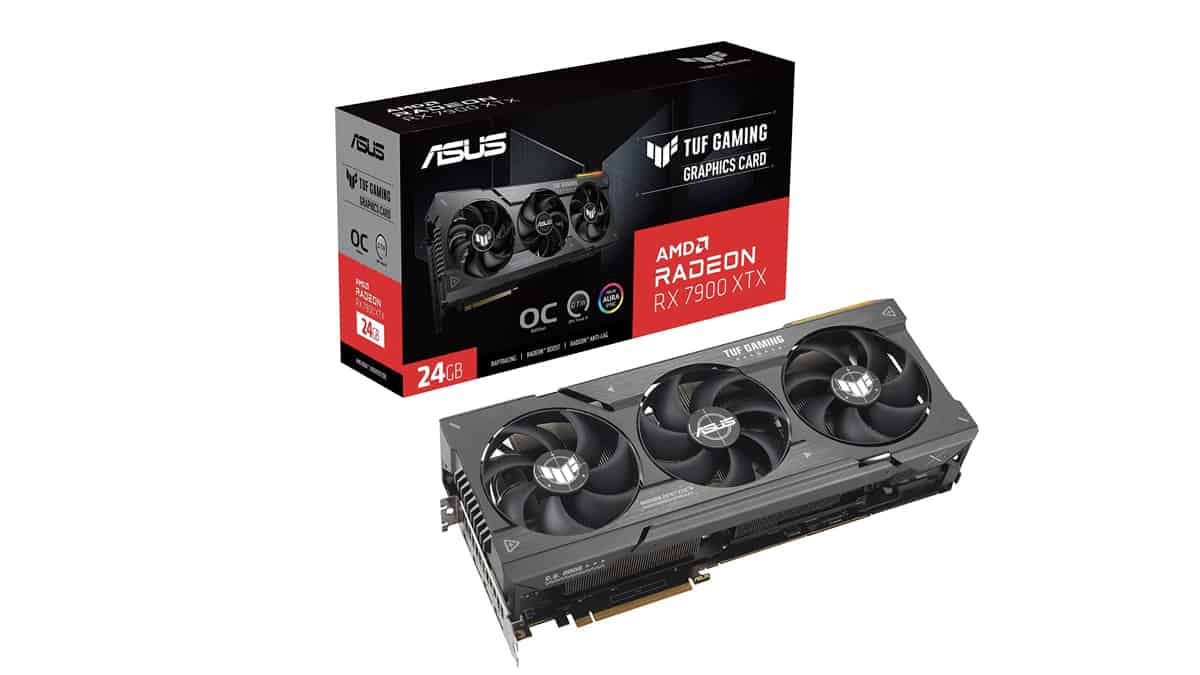RX 7800 XT vs RX 7900 XT – which one is better?

Table of Contents
When delving into AMD’s newest GPU lineup, it’s always intriguing to pinpoint where the performance sweet spot lies in its own cards, although Nvidia is the clear competitor. With the RX 7800 XT showcasing impressive capabilities, many wonder just how close it inches toward one of the pinnacles of this generation – the RX 7900 XT.
Let’s delve deep into a direct face-off: RX 7800 XT vs. 7900 XT, and discern how their specs, performance, and price compare. We have also reviewed the products, so you get a deeper insight into their performance.
Which card is for you?
The AMD Radeon RX 7900 XT is the more powerful card, designed for those seeking the absolute best performance in games, especially at 4K resolutions. However, its significantly higher price makes the RX 7800 XT the better value choice, offering excellent 1440p gaming performance at a more accessible price point.
RX 7800 XT vs. 7900 XT: Specs
| Specifications | RX 7800 XT | RX 7900 XT |
|---|---|---|
| RX 7800 XT | RX 7900 XT | |
| Architecture | Navi 32 | Navi 31 |
| Compute Units | 60 | 84 |
| Cores | 3840 | 5376 |
| VRAM | 16 GB GDDR6 | 20GB GDDR6 |
| Memory Interface Width | 256-bit | 320-bit |
| Memory bandwidth | 620.8 GB/s | 800.0 GB/s |
| Process Technology | TSMC 5nm | TSMC 5nm |
| Base clock speed | 1800 MHz | 1500 MHz |
| Boost Clock speed | 2430 MHz | 2394 MHz |
| Graphics Card Power (TDP) | 263 W | 300 W |
| L3 cache | 64 MB | 80 MB |
| MSRP | $499 | $899 |
When it comes to raw muscle for handling demanding games and applications, the RX 7900 XT takes the lead with a whopping 20GB of GDDR6 memory. This is a significant advantage over the RX 7800 XT’s 16GB. In today’s world of high-resolution textures and ever-increasing graphical fidelity, extra VRAM becomes crucial for avoiding performance bottlenecks. Imagine a complex game environment loaded with intricate details – the 7900 XT’s additional memory ensures smoother gameplay by storing more textures readily available for the GPU to render.
This advantage is further amplified by the wider 320-bit memory interface on the RX 7900 XT compared to the 256-bit interface found on the 7800 XT. Think of the memory interface as a highway for data to flow between the graphics card’s memory and its processing core.
A wider highway allows for more traffic to flow simultaneously, translating to faster data transfer rates. This translates to a significant boost in memory bandwidth for the 7900 XT, reaching a staggering 800 GB/s compared to the 7800 XT’s 620.8 GB/s.
The RX 7900 XT undeniably boasts superior specs for those seeking maximum power in AMD’s RDNA 3 lineup. However, the RX 7800 XT remains a formidable contender, offering a balance of performance and value.
RX 7800 XT vs. 7900 XT: Performance
In the realm of GPUs, performance is paramount, and the differences in memory specifications between the RX 7800 XT and the 7900 XT are pivotal in forecasting their relative capabilities.
To begin with, the RX 7900 XT has an evident advantage with its 20GB GDDR6 VRAM over the 7800 XT’s 16GB GDDR6. A larger VRAM essentially means that the GPU can store and handle more data simultaneously, reducing the need to constantly fetch data from the main system memory. This boosts overall speed and efficiency, especially in graphically intensive tasks like or high-resolution video editing and 4K gaming, where the 7800 XT could deliver — but where the 7900 XT will be better. Furthermore, memory bandwidth and interface width play a crucial role in determining how fast data moves within the GPU. The RX 7900 XT’s wider memory interface of 320 bit, in comparison to the 7800 XT’s 256 bit, allows for greater data throughput.
In our RX 7900 XT review, it can be seen that the card delivers great performance for both 1440p and 4K. Plus, considering the price drop, this GPU can go head-to-head with some of NVIDIA's best mid-range cards.
Given these specifications, it’s logical to infer that the RX 7900 XT will deliver superior performance in most scenarios. While the 7800 XT is undoubtedly a strong contender, the heightened memory capacities and bandwidths of the 7900 XT position it as the more robust GPU in this comparison.
With that being said, the RX 7800 XT is not as powerful as the RX 7900 XT. However, it has its own perks – especially if you look at the performance it delivers for 1440p gaming. In our RX 7800 XT review, we found out that this GPU worked really well with 1440p games – especially at its price point. Plus, this is backed by the test that we conducted in-house. The card managed to deliver 97 FPS while playing Cyberpunk 2077 at 1440p Ultra settings without DLSS.
RX 7800 XT vs. 7900 XT: Price
Price is a significant factor when choosing between these two powerful cards. The RX 7900 XT offers a substantial performance increase over the RX 7800 XT, but this comes at a cost. Its MSRP of $899 is significantly higher than the RX 7800 XT’s MSRP of $649.
This price difference reflects the 7900 XT’s superior specifications and expected performance advantage. However, the RX 7800 XT presents a compelling value proposition, offering strong performance potential at a more budget-friendly price point.
Frequently Asked Questions
Is 7800 or 7900 better for 1440p?
If you want a GPU purely for 1440p, then we think that the RX 7800 XT offers better value for your build. However, if you want 1440p as well as 4K, then the RX 7900 XT will be a better investment.
Does RX 7800 XT have ray tracing?
Yes, the RX 7800 XT has 60 Ray Accelerators, which are responsible for ray tracing. So yes, this GPU can handle ray tracing.
Conclusion
In a direct face-off, the 7900 XT undoubtedly secures the title of the more formidable GPU, exhibiting superior specs and expected performance. However, not all battles are won on brute strength alone. The 7800 XT, with its more approachable price tag, presents an attractive choice for gamers and casual users alike, delivering potent performance without breaking the bank.
If your pursuits revolve around gaming and general tasks, the 7800 XT emerges as a more value-driven proposition. Conversely, for those with ambitious projects that demand the utmost in graphical prowess, be it in content creation, high-end gaming, or data-heavy applications, the 7900 XT stands ready to offer the muscle you require.


